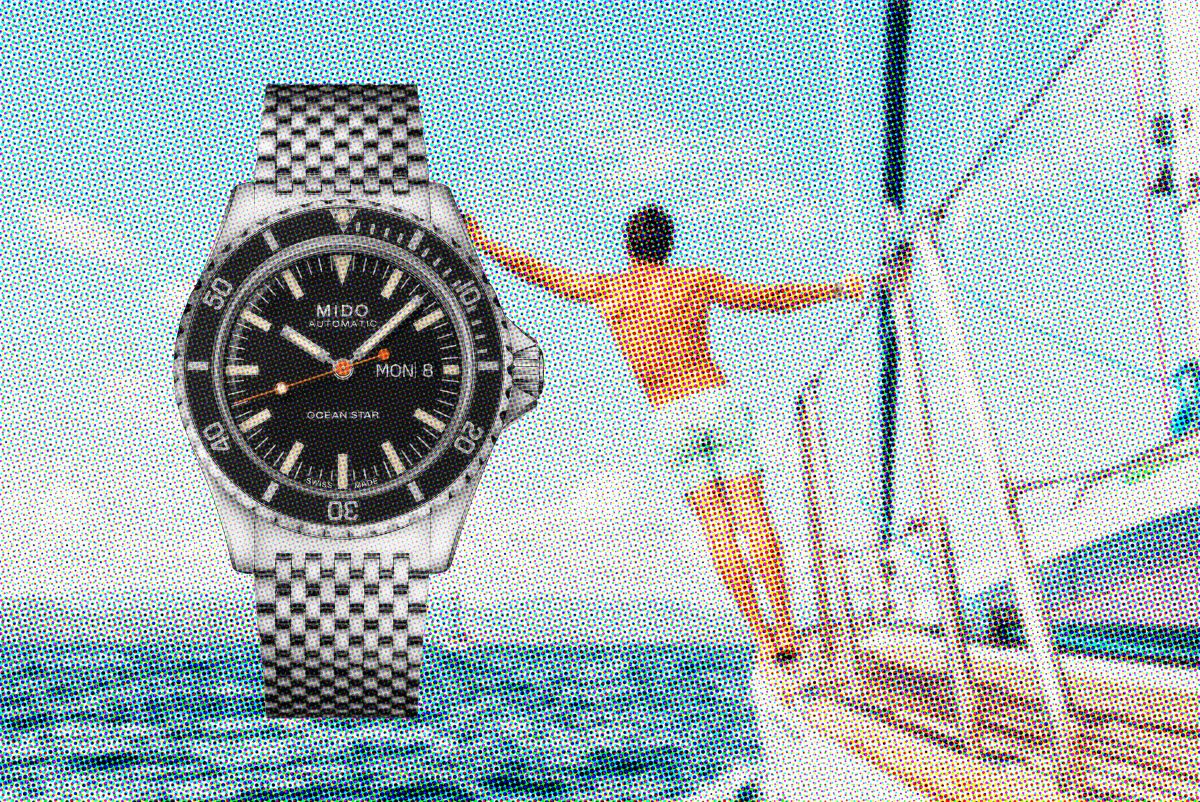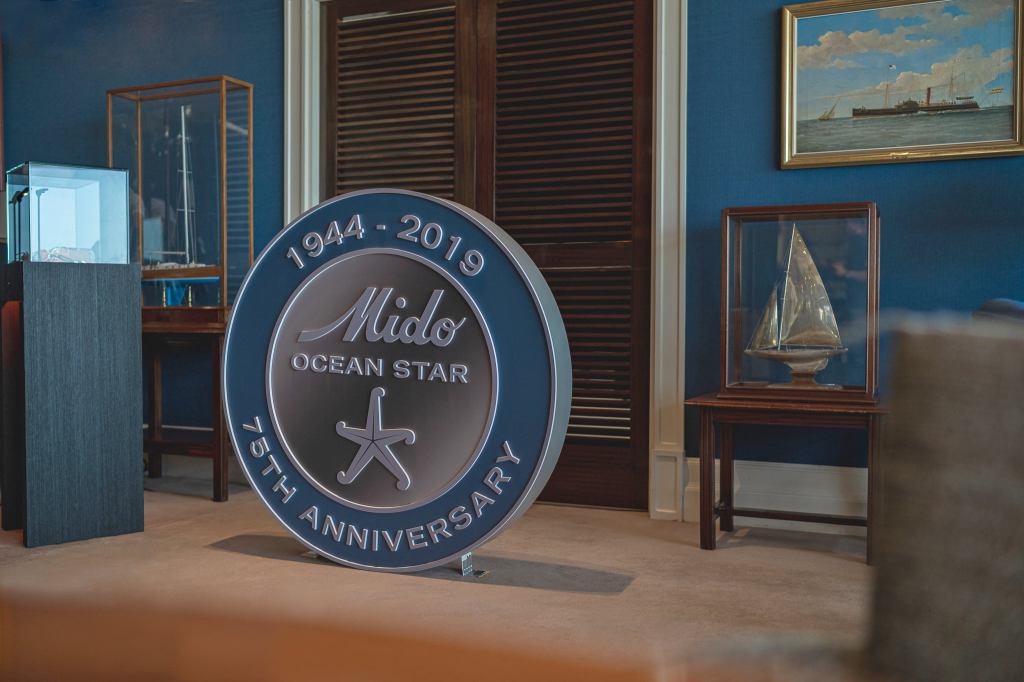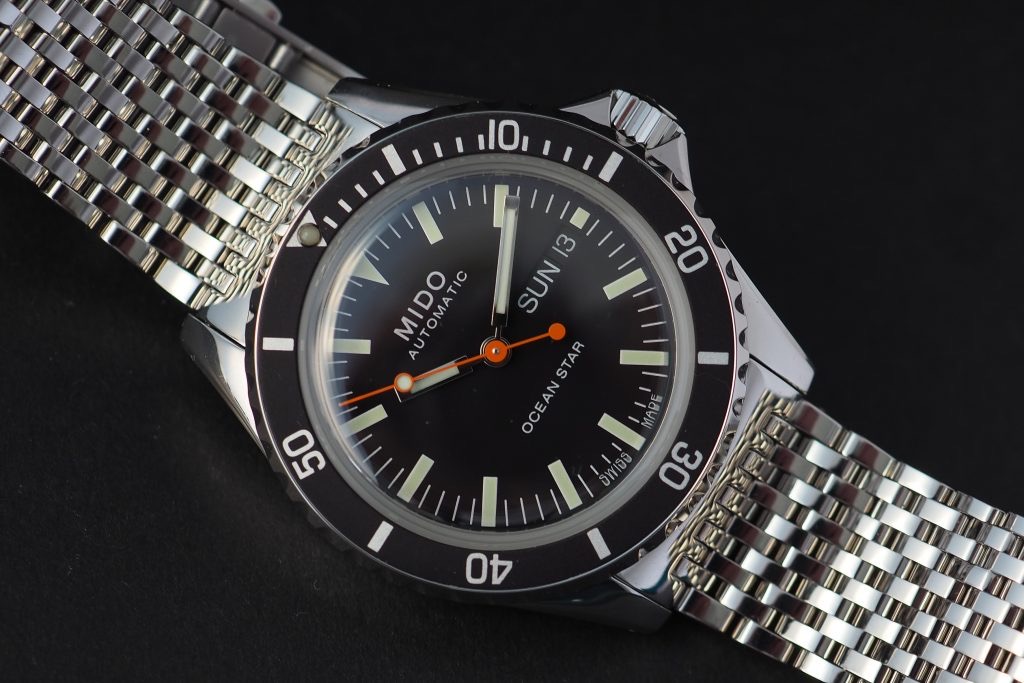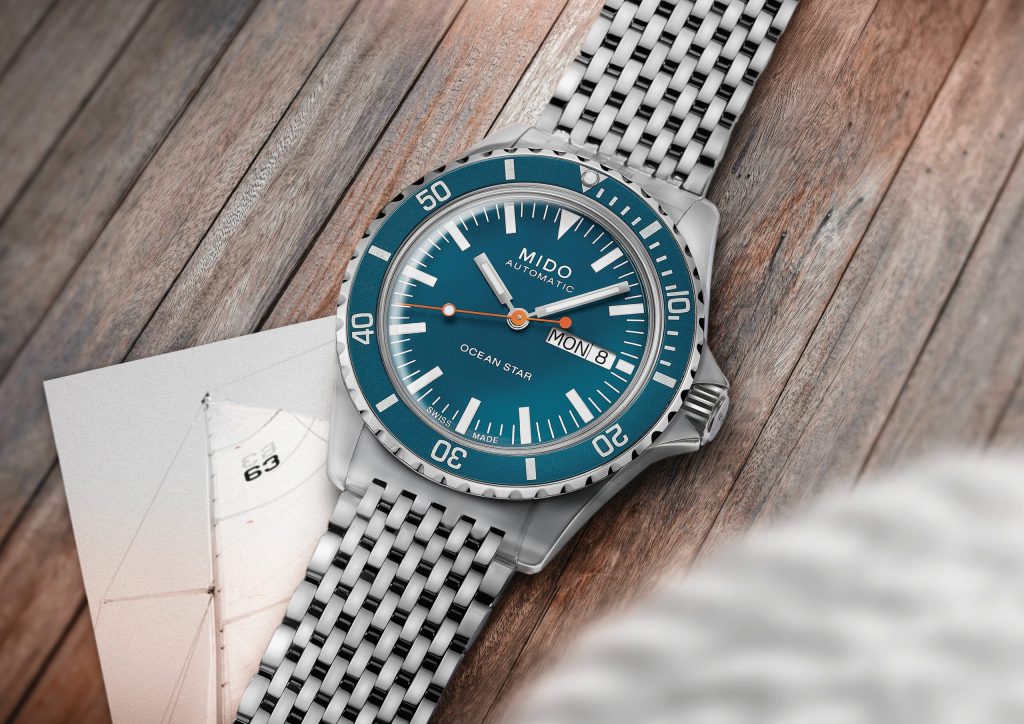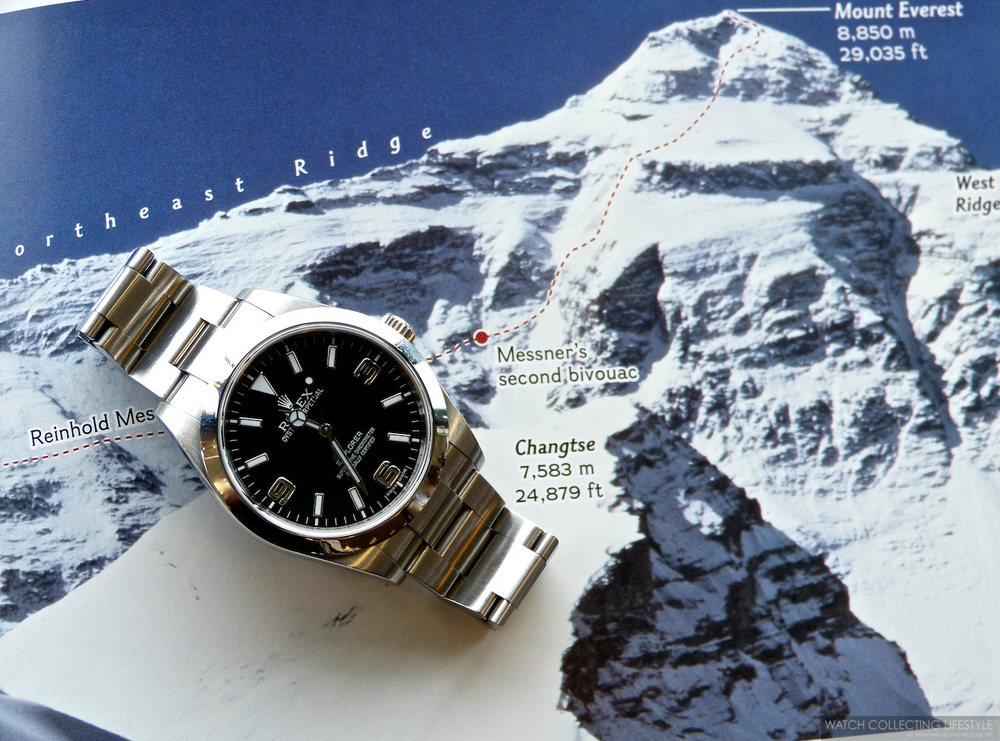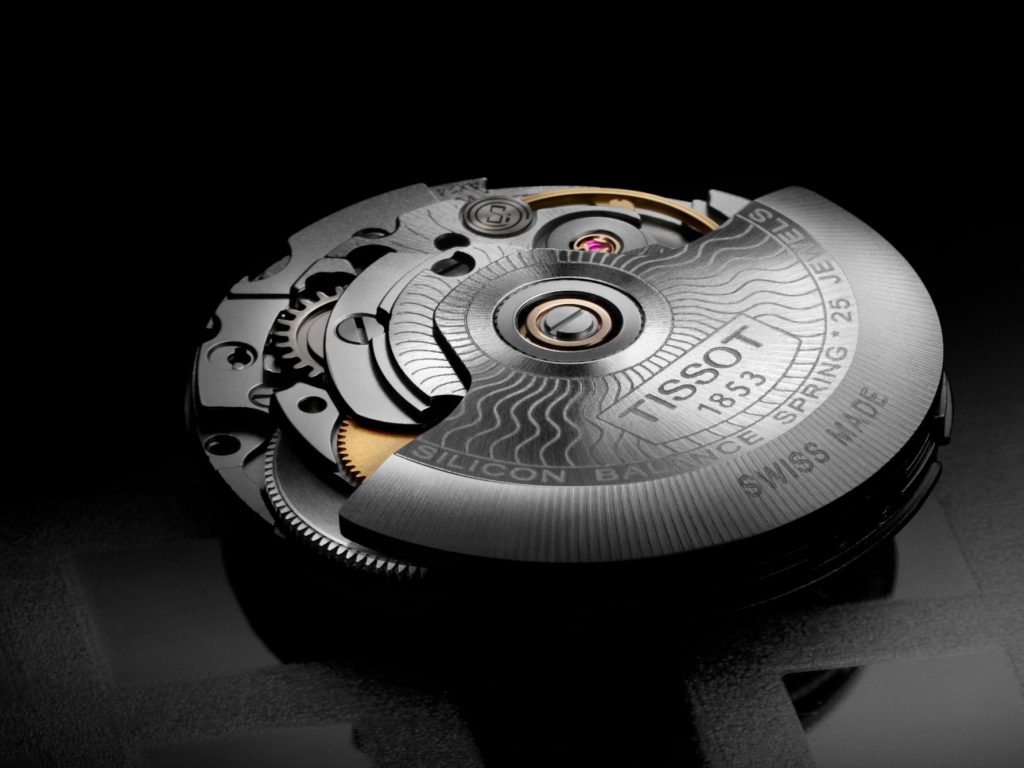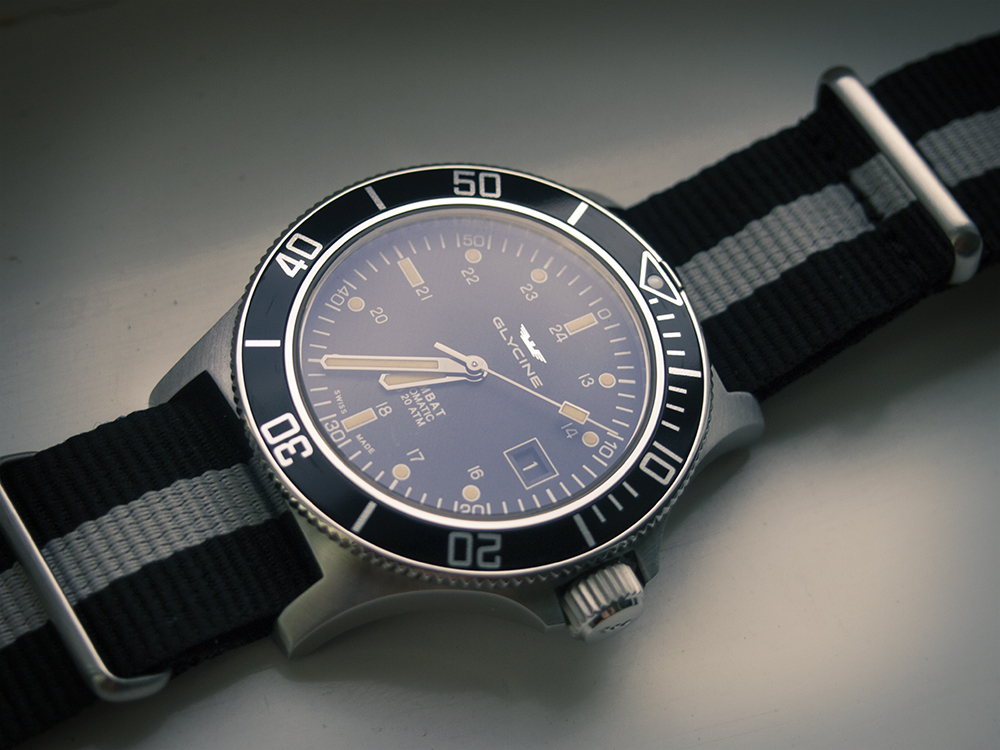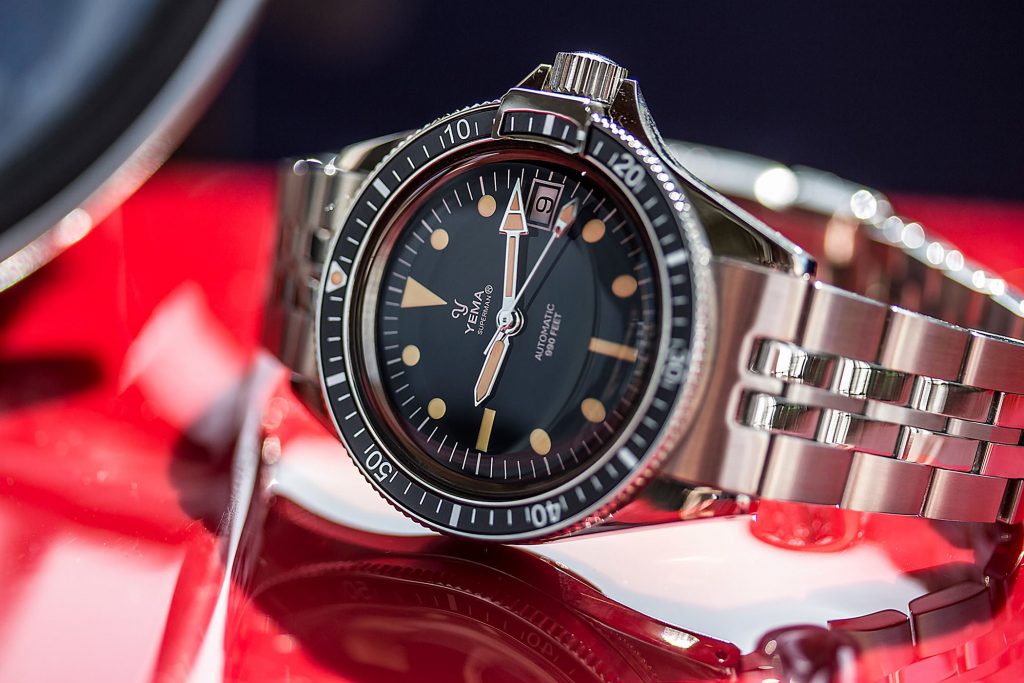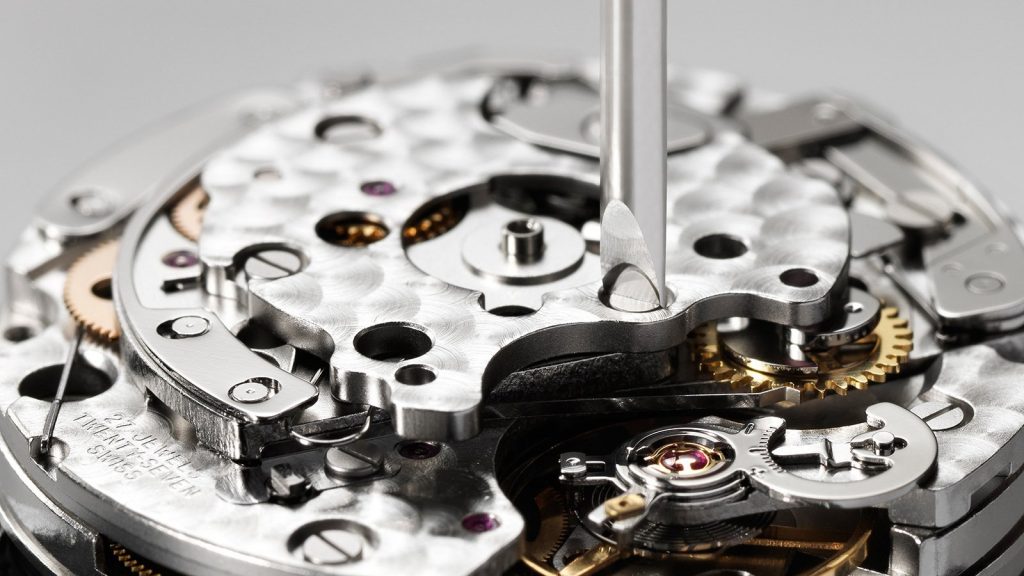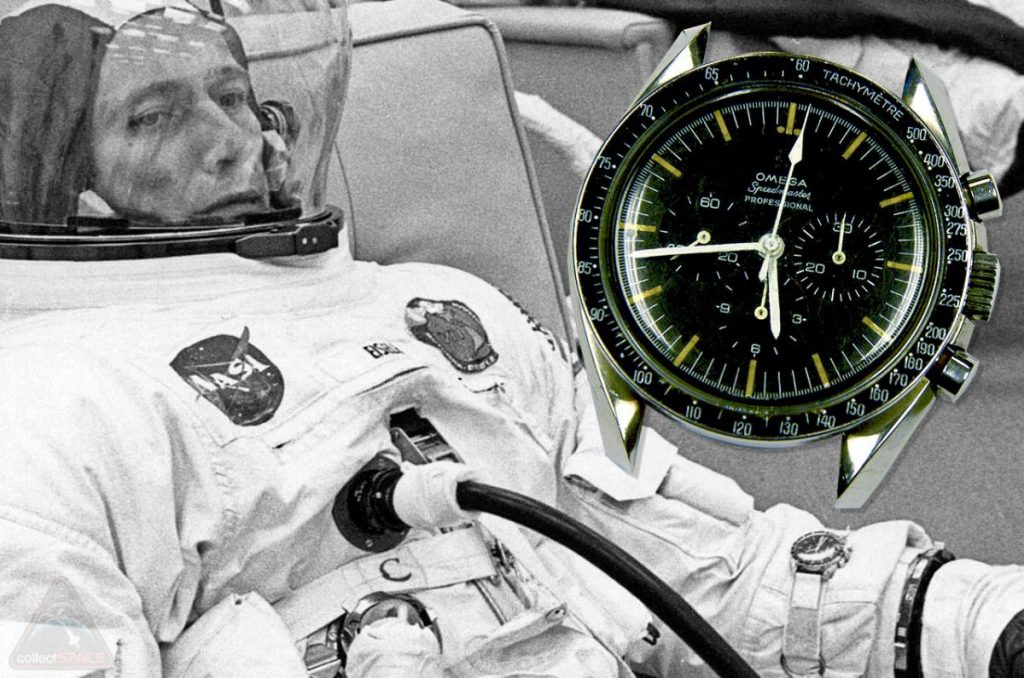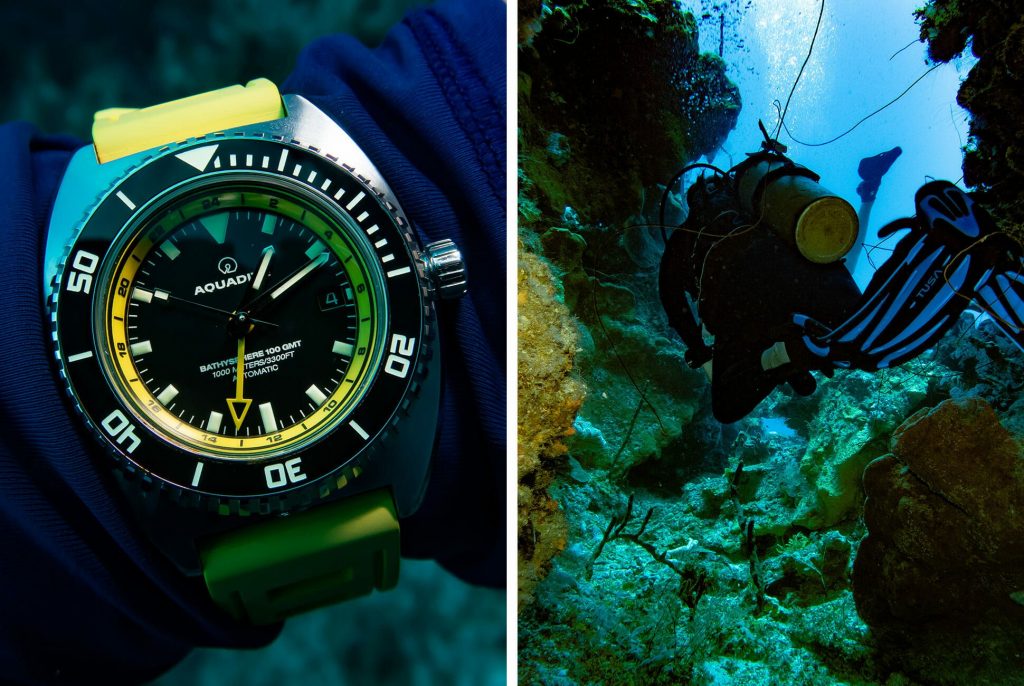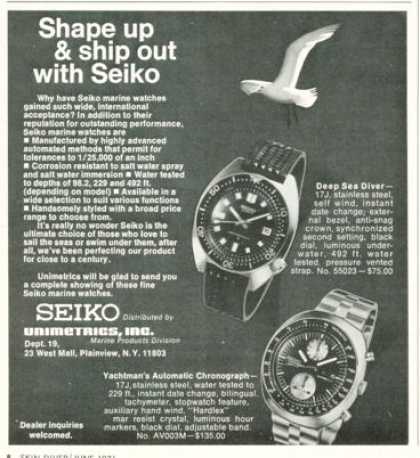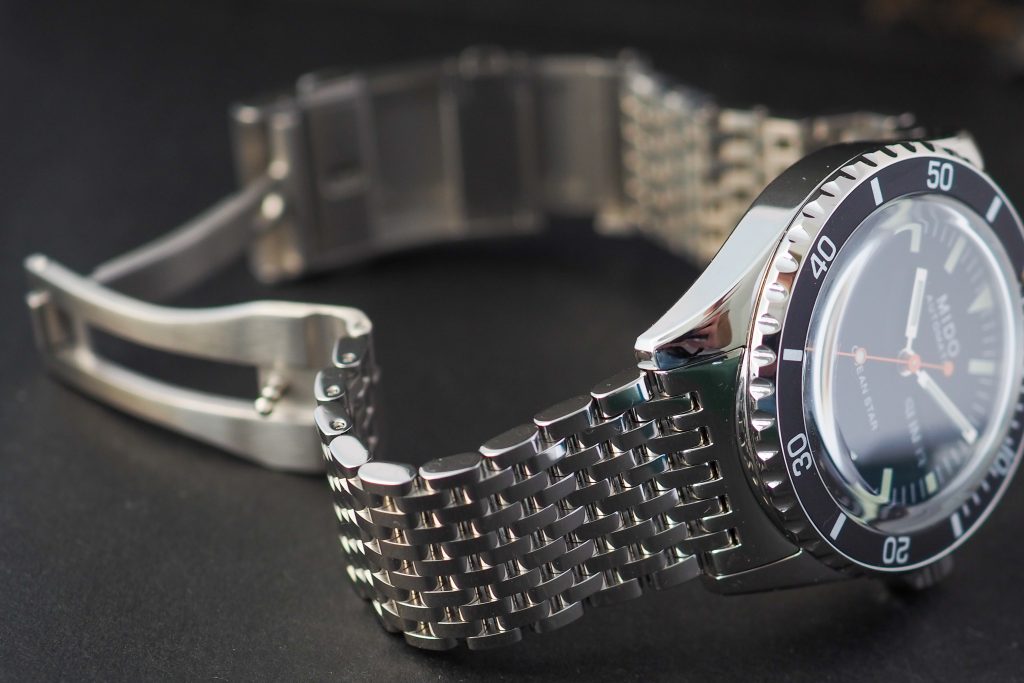In 1959 Mido released the Ocean Star line of watches with a completely novel monocoque case design, pressure fitted crystal, cork crown sealing system and an astonishing 300 meters of water resistance. The nineteen-forties and fifties were a time of incredible innovation for waterproof watches. And the release of the 1959 Ocean Star marked a fitting seal to the decade of watch case advancements.
The “Oceanstar” trademark first began use on movements and the occasional Multifort watch dial since 1944. With the starfish symbol appearing on Mido movements in 1941.


Then President of Mido Watch Company of America, a subsidiary and distributor of Mido watches in the United States, testified, “That his company received shipments of watches marked ‘OCEANSTAR’ beginning in 1944” and that, with the 1959 Ocean Star line, began receiving them in “vast quantities.” [source]
The pursuit of waterproof watches goes back to the 17th century.
By the 20th century there was a push to meet the needs of explorers, navies, and professional divers. As tales of exotic adventure spread, another wave was forming, and would soon make a big splash on popular culture. The emergence of the amateur sport adventurist.
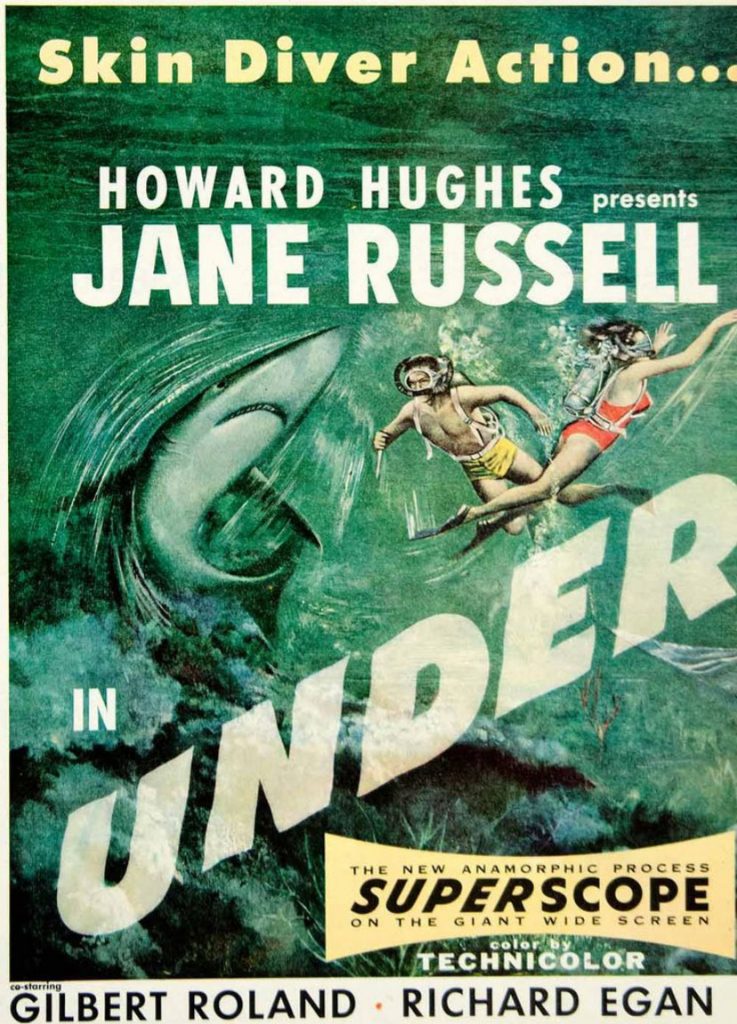
Mido has a long, and fascinating, history in manufacturing waterproof watches.
Used by Navy service men, aviators, and swimmers, by the 1950’s they had developed a reputation for making reliable and durable water resistant pieces. Mido already made their watches with the, later named, Aquadura system which incorporated a chemically treated cork to seal the stem of the crown, and a screw down case back. Amazingly, it worked so well that with the crown pulled out it still provided 100 feet of water resistance [source].
In 1934, they released the Multifort, a watch that was self-winding, anti-magnetic, impact resistant (one of the first watch companies to use the now famous Incabloc system), and waterproof. You cannot overstate how much of milestone this was. It was a winning combination and set the standard that all automatic sport and tool watches would follow.


And it was incredibly waterproof. While some waterproof watches prior to this were resistant to being splashed and marketed themselves as waterproof. This was a watch you could swim with.
Dave Haynes, NAWCC vintage watch repairer and chronicler, said, “Mido watches were very high end expensive watches. They were always cased well and waterproof … Old watchmakers and jewelers I’ve talked to said that they were a direct competitor for Rolex in the high end rugged sport watch market.”
The 1959 monocoque case.
In 1959, with the introduction of a true mono-shell case (the design was only in two parts, crystal and a single one piece monocoque case), the Mido Ocean Star watch offered a degree of impermeability no watch company had achieved before. And it may have just introduced the worlds most water resistant watch with a depth rating of 300 meters.
But, in a very Mido way, they didn’t make a big splash about it.
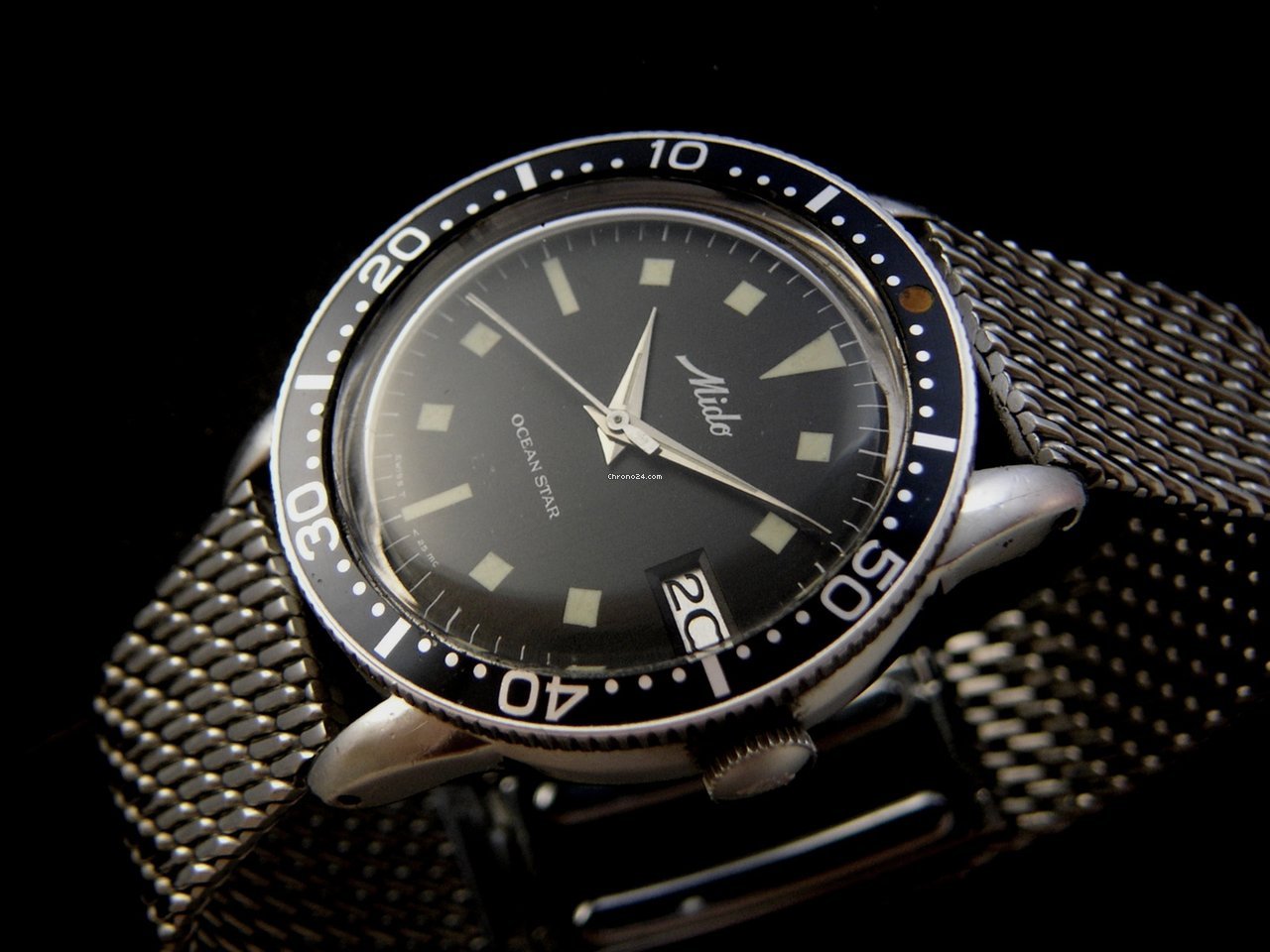
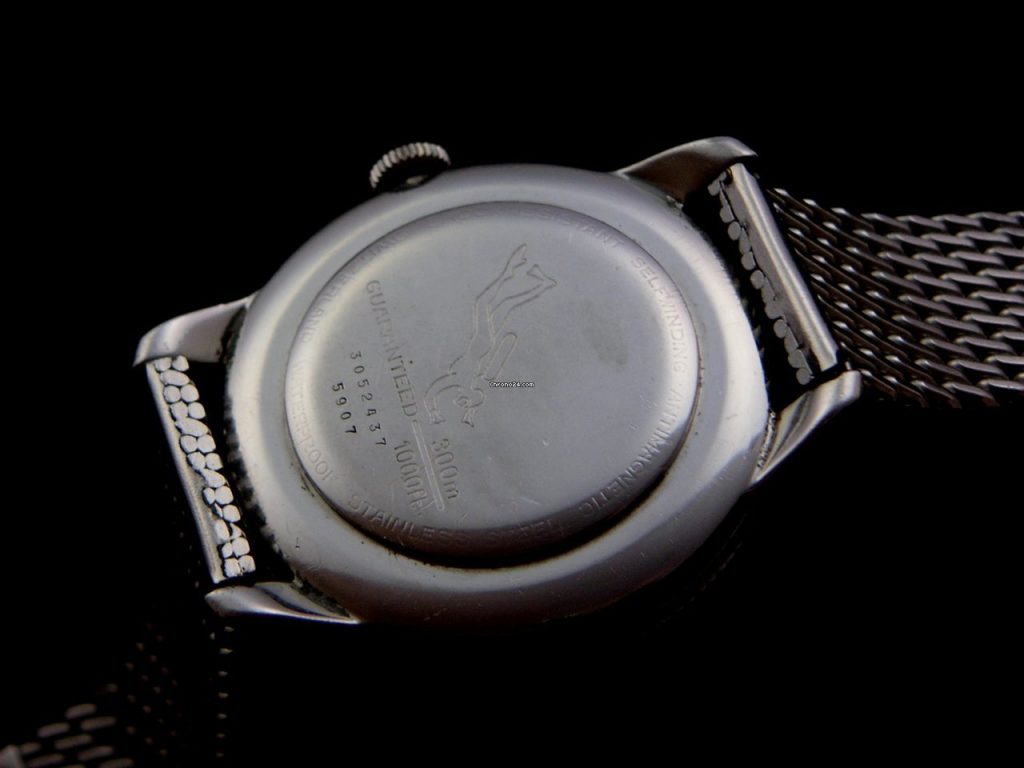
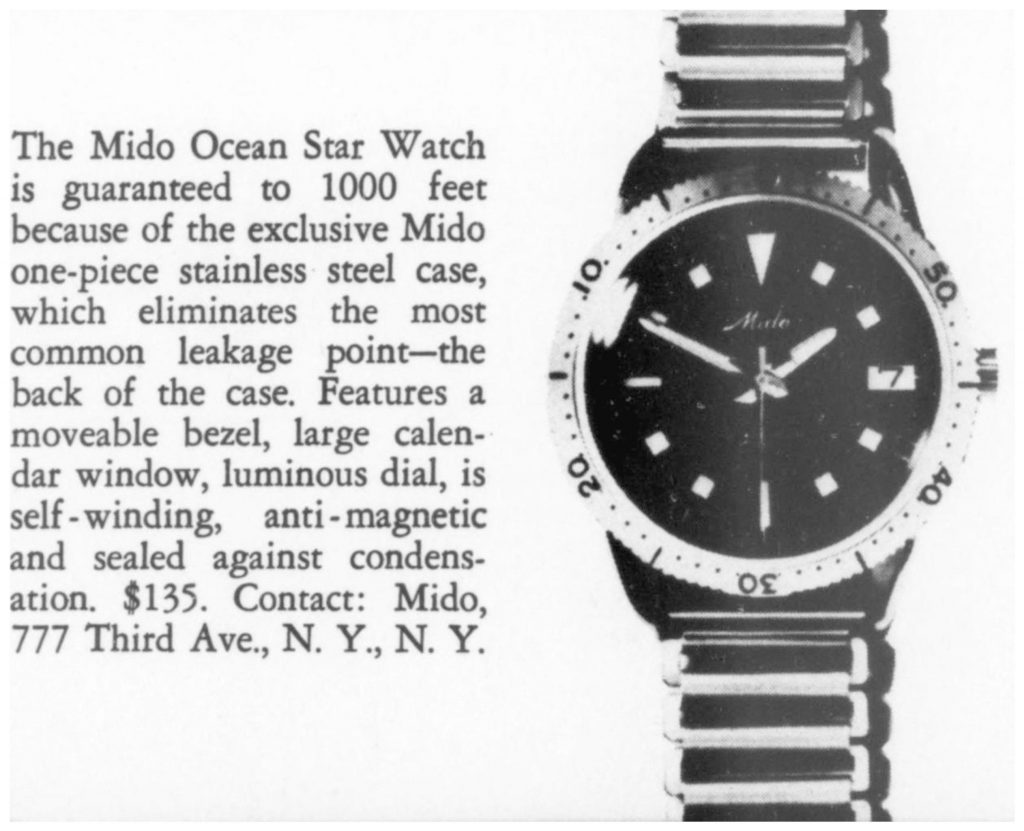
To put this achievement in perspective. By the 1960s the Omega Seamaster offered 200 meters of water resistance; the Rolex Submariner 100 meters; and the Zodiac Sea Wolf 100 meters.
A dressy sports watch.
Yet Mido was not racing to the bottom of the sea. Rather, they were designing purpose-built watches for another sea-dweller. The recreational, laid-back surfing, skin-diving and water sport enthusiast kind – who valued refined Swiss engineering and beautiful craftsmanship. The Ocean Star was Mido’s move towards a dressy sports watch that improved on the great technology they had refined in the Multifort.
The Ocean Star kept the extremely reliable powerwind movement that had endeared the Multifort to its owners. While designing a new line of sports watches that ranged from ultra-dressy to the more tool-centric bezel diver watch that the Tribute is a reissue of.


As an adventure sports watch of the 1960s, the Ocean Star was as much for mountains as it was for the seas. In 1964/65 Edmund Hillary sponsored an Antarctic expedition to be the first to summit the 9000-foot volcanic peak ‘Big Ben’. It was the first private Australian expedition to the Antartic since Sir Douglas Mawson’s in 1929. And the Mido Ocean Star was selected as the watch of choice for the expedition.
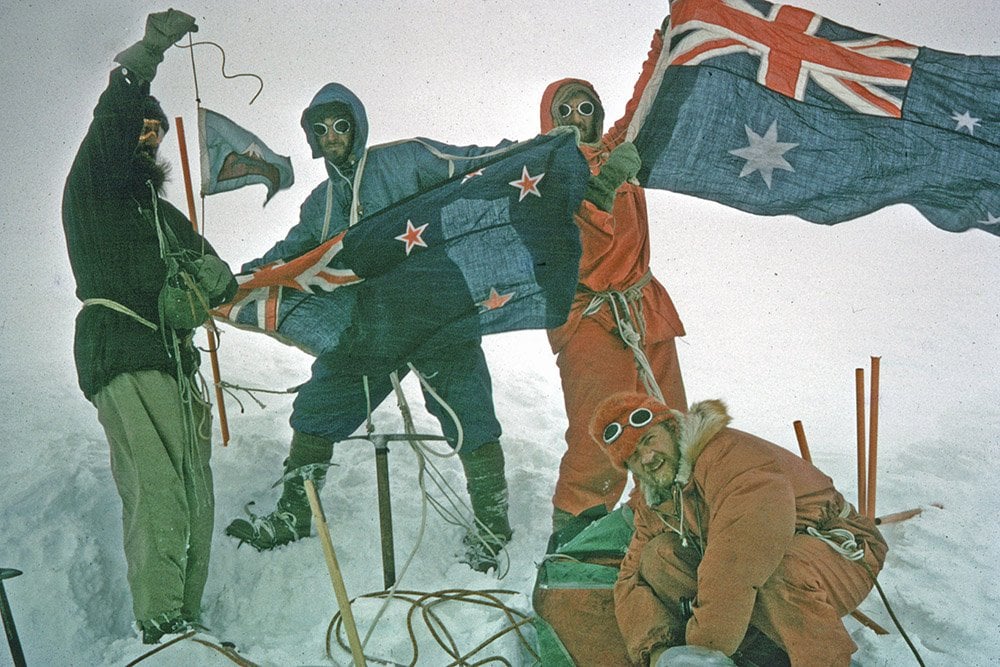
You can find more history of Mido here.
The launch of the 75th Anniversary Mido Ocean Star Tribute.
That was a lot of history. I feel it helps explain the impact of Mido during the 20th century and why the Ocean Star “waterproof” line was so significant to the brand.
To commemorate the mark, Mido released both a black and a blue dial version with aluminum bezels. The Ocean Star has classic masculine lines and a pleasant 40.5mm size for a vintage diver.
The Mido Ocean Star Tribute is a reissue of a watch that was birthed from this golden age of discovery, exploration and adventure.


It stays true to the original aesthetic. Harkening back to a 1970’s Mido diving watch. Carrying over the design elements of the bezel, the orange lollypop second hand (which happens to be the official color of Mido), the rectangular minute and hour hands, the crown guards, and the date/day complication. Here was a watch that would take you anywhere – and would never miss a beat.
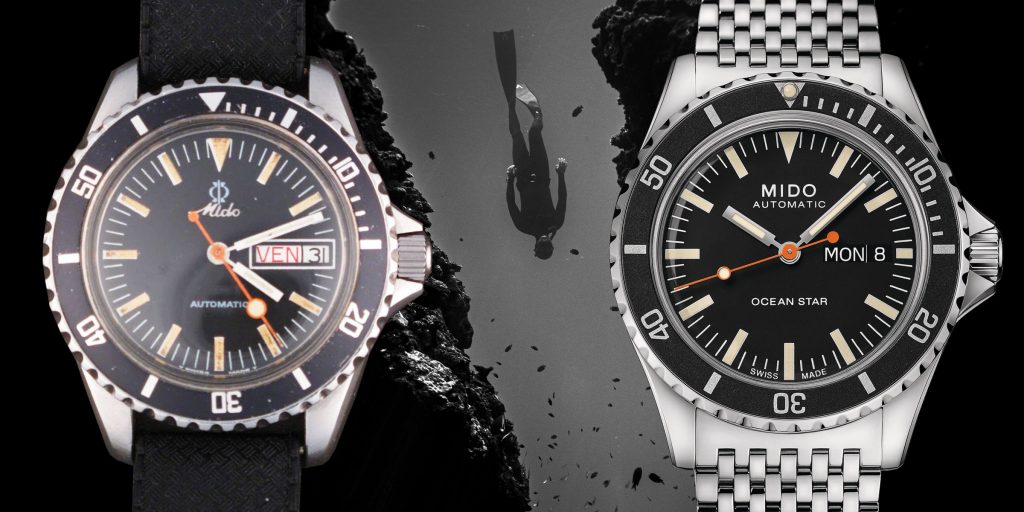
Red Bull Cliff Diving World Series
In 2019, Mido chose to launch the Ocean Star Tribute at none other than the Red Bull Cliff Diving World Series.

The 75th Anniversary Special Edition Mido Ocean Star Tribute is something to behold. Somehow it pays respect to both their mid-century professional dive watches and their dressier sports watch they were known for. It has a classic 60s dial and diver bezel with a luxurious bracelet. The bracelet is refined, polished, and incredibly well executed. With a beautiful clasp and divers extension.
Watch experts such as Teddy Baldassarre remarked that the bracelet was of a quality that one could not find in the $1150 price range. Saying, “One of the best bracelets I’ve found in a dive watch … As you go out you get to handle hundreds, if not thousands, of watches. You get more of an appreciation for certain things. You get to really hone in on what works and what doesn’t. The Mido Ocean Star just simply works.”
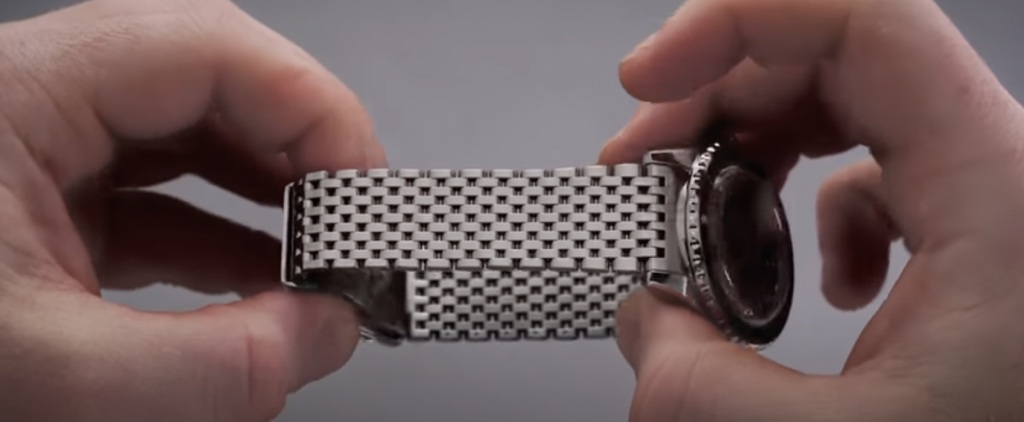
As of the last published COSC certifications, Mido is actually fourth in line for producing the most chronometer certified watches, among the top of Rolex, Omega and Breitling. Which does tell the story of what Mido really cares about when it comes to producing their watches: Swiss precision and quality.
The movement is the Mido Calibre 80. Which is based on the highly regarded Swiss made ETA 2824-2 movement. But modified for an accurate 80 hour power reserve. It’s known as a precise, reliable, and robust mechanical movement. The refined 80 hour power reserve movement is made exclusively for certain Swiss companies. The Mido Calibre 80 improves upon the design with their pallet fork, balance spring, escape wheel, materials and finishes. As Mido CEO Franz Linder says about the movement, “We have certain standards of our own, where we try to go even further.”
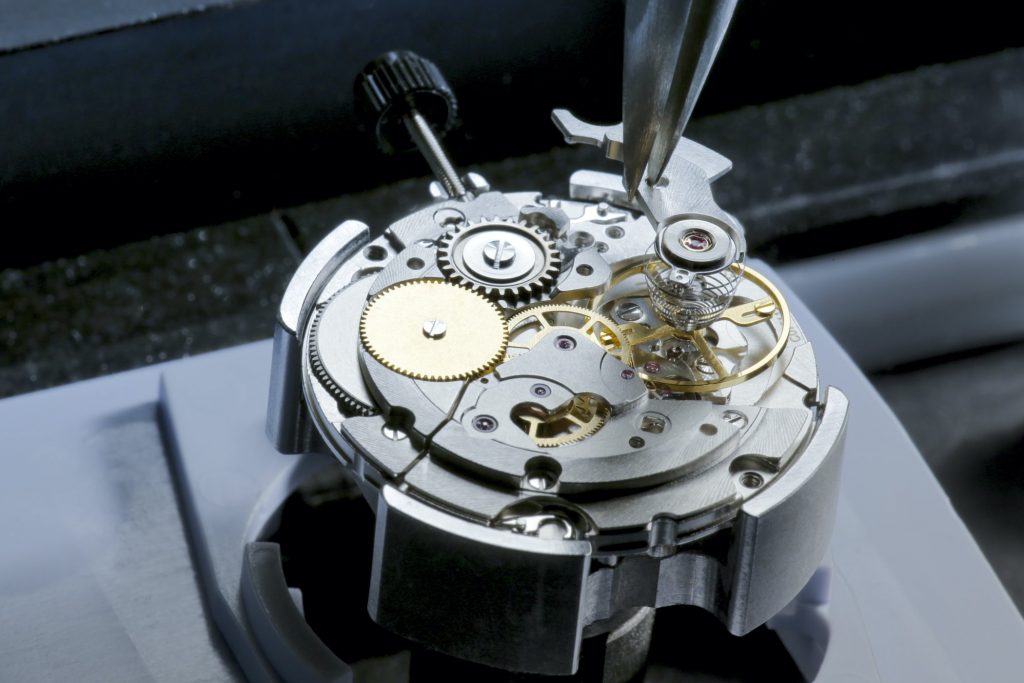
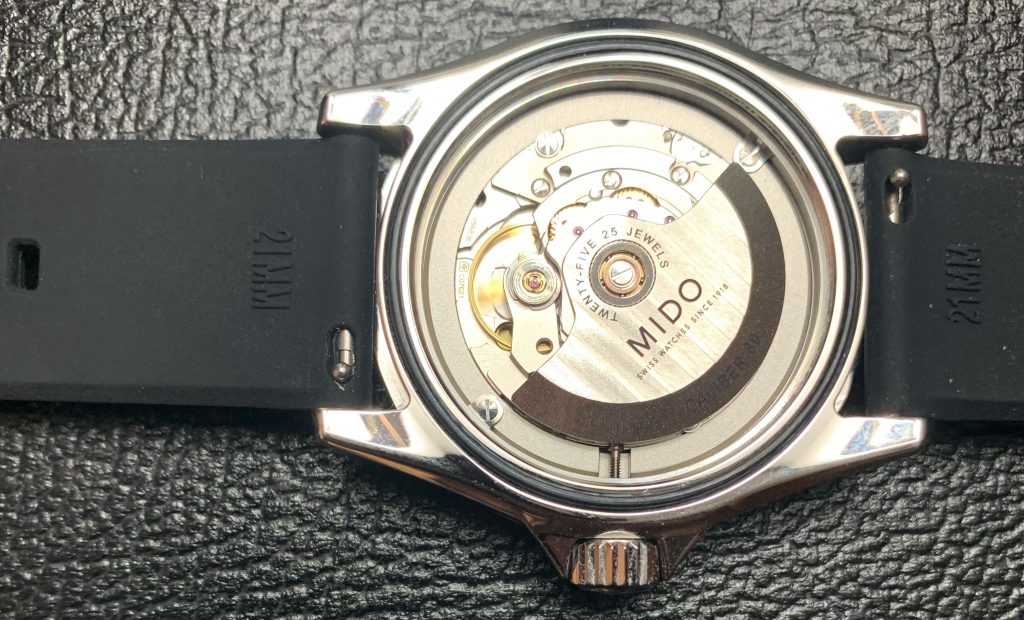
The bezel is steel, unidirectional, and 60-click. It has a bit of lateral play – but does slot into place and lines up precisely.
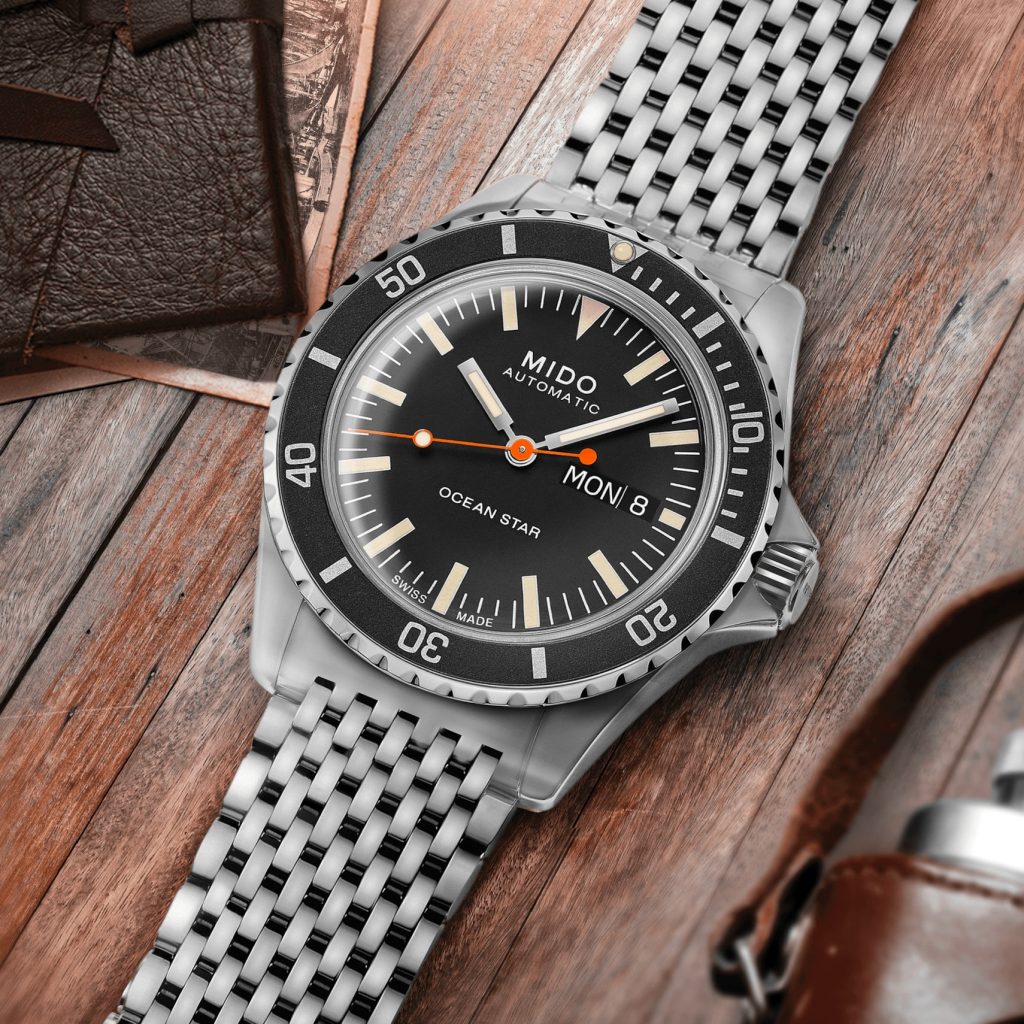
It has a matte black dial with lumed indices that change color from a pale green to a light cream depending on the the light. Of note is the crown guard, true to the original. Not a common feature of 1960 and 1970 dive watches.
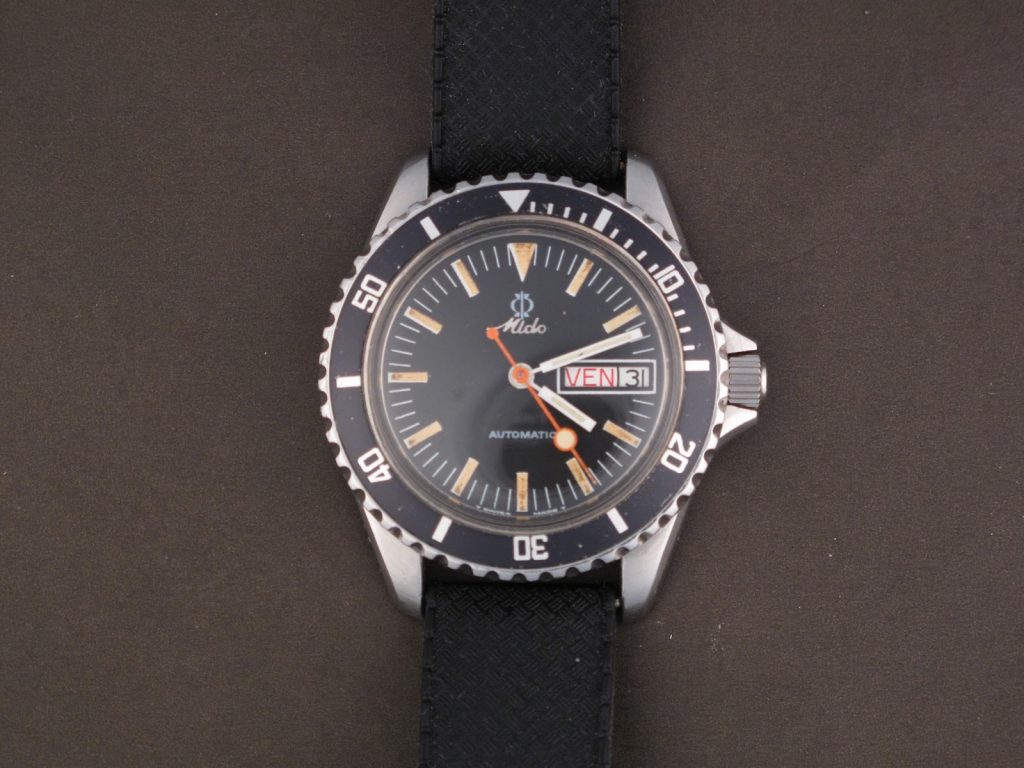
In short, the classic styling, the domed crystal, the embodiment of an era, the dual nature of tool and class – all appeals to me.
There’s something beautiful about quality workmanship that can withstand a life of use and still be serviced to carry with it the stories of a one generation to another.
The Mido Ocean Star has the aesthetic je ne sais quoi. Embodying style, functionality, quality, a bit of 60’s flare, and Swiss pride. Finding this watch was unexpected, like hiking a trail, looking down and spotting a jewel. I purchased it the same day I discovered it from a Canadian watch house. And haven’t looked back.
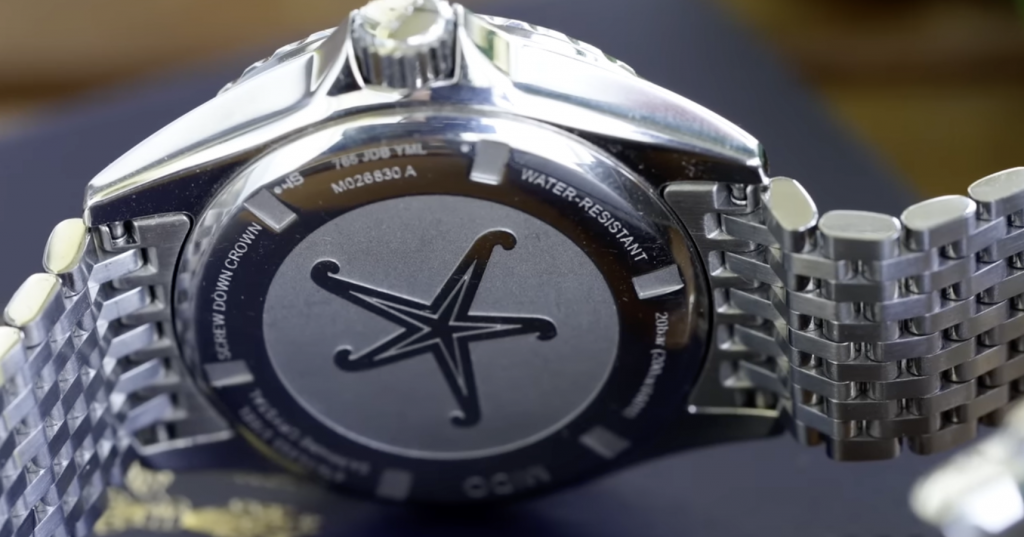
Mido Ocean Star Tribute Features
The retro look of the indexes is perfectly offset by the black dial, orange second hand and bezel.
Features:
- 40.5mm case diameter
- 13.43mm case height
- Boxed saphire crystal
- Aluminum insert bezel
- Super-LumiNova Applied Indexes
- Screw-down crown
- Automatic Mido Calibre 80 Movement (ETA C07.621 base)
- Elaboré grade
- Hacking
- Handwinding
- 80 hour power reserve
- 20 bar (200 m / 660 ft) water resistance
- Hour, minute, second, day and date functions
- Made in Switzerland
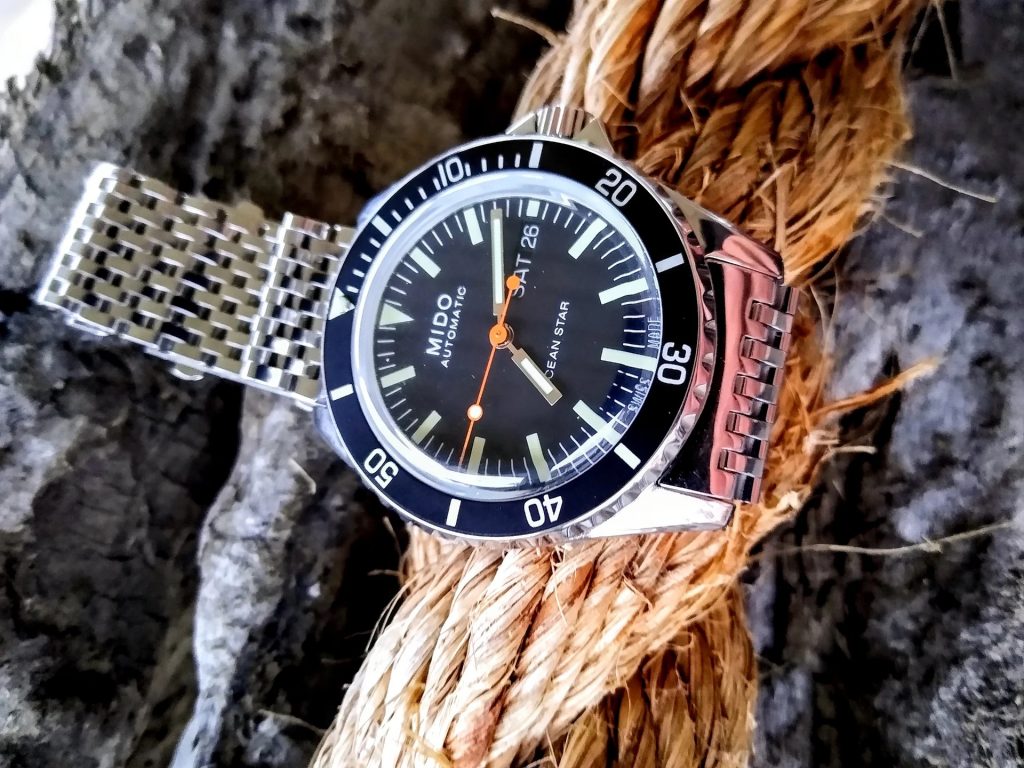
Conclusion
The black dial Ocean Star Tribute is an honest and timeless design.
I’d been on the hunt for a do-it-all watch that would wear a lifetime. A waterproof, all-weather, timepiece that would suit an active life of cycling, hiking, swimming, backcountry skiing, business casual, travel and motorcycling.
The Mido Ocean Star Tribute fits the bill. It’s practical, designed to withstand the pressures of the deep and as such is built to tighter tolerances. It has the built in bezel timer. And I plan on keeping the it for a lifetime. The Mido Ocean Star Tribute was exactly what I was looking for.
Discovering the Mido sparked a curiosity to uncover more about this elegant watch maker. And I’ve found the journey of researching the history behind the watch as fascinating and rewarding as the use of the watch itself.
If you have any information, please comment below as it all helps the community.
Reviews by watch enthusiasts.
- Video The Ultimate Vintage Reissue Diver Comparison
- Article Mido Ocean Star Tribute Review
- Video Teddy Baldassarre’s Ocean Star Tribute Review
- Article Mido Ocean Star Special Edition
- Video 75th Anniversary Special Edition Review
- Video A magnificent Vintage Reissue
- Video Taking the Mido for a swim
The community of Reddit has put together a great resource guide on Mido. The common theme is that they are of high quality and one will not regret owning a Mido.

